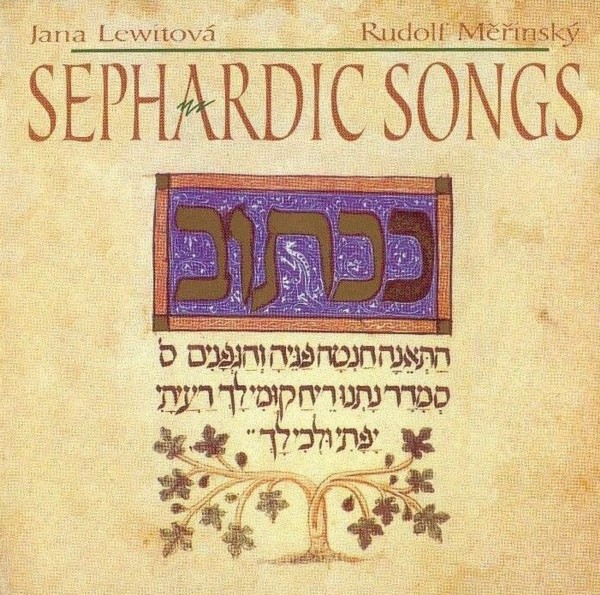Sephardic Songs / Jana Lewitová, Rudolf Měřinský

arta.cz
good-music-guide.com/reviews
cdmusic.cz
music.taxoft.cz/jana_lewitova
Arta F10047-2
released 10/1993
01 - Avrix mi galanica [2:27]
02 - A la nana, a la buba [2:04]
03 - Aire de mujer [2:14]
04 - Variations on the song 'El Rey de Francia' I
[1:21]
05 - Adio querida [3:53]
06 - Al pasar por Casablanca [2:33]
07 - Irme quiero [1:24]
08 - Variations on the song 'El Rey de Francia' II
[2:07]
09 - El rey que mucho madruga [5:41]
10 - Ven querida [3:30]
11 - La serena [2:16]
12 - Variations on the song 'El Rey de Francia' III
[3:06]
13 - Partos trocados [2:21]
14 - Durme, durme [2:40]
15 - Paxaro d'hermozura [1:40]
16 - Variations on the song 'El Rey de Francia' IV
[3:08]
17 - Noches, noches [3:52]
18 - Un lunes por la mañana [2:46]
19 - Variations on the song 'El Rey de Francia' V
[1:58]
20 - Ya viene el cativo [2:15]
21 - Esta montaña [5:31]
22 - Quando el rey Nimrod [4:19]
Jana
Lewitová, mezzo-soprano
Rudolf Měřinský, Renaissance lutes
Hana Fleková, viola da gamba
Inge Žádná, viola da gamba
Pavel Plánka, percussion

"…All Jews, both men
and women, living in and passing through Our kingdoms and Our lands are
to leave Our kingdom by the end of the month of July, together with
their sons and daughters and wet-nurses and Jewish relatives both
adults and children, and let them not dare to return, for they do so
under pain of death and the confiscation of all their property by the
royal Treasury…"
Granada, 31 March 1492
This lenghty decree issued by Queen Isabella of Spain determined the
fate of all Spanish Jews.
During the last millenium before the Christian era their forefathers
had sailed to the Iberian penninsula with Phoenician traders, and
later, together with Christians and Arabs, had created the uniquely
tolerant culture of medieval Spain.
Today it is hard to say how far the Jews influenced Spanish music. One
thing is certain, however: over all the centuries of the diaspora among
other cultures, their songs still proclaim their Spanish origin. In
mid-sixteenth century, on the other hand, the famous musician Alonso
Mudarra was arranging Sephardic songs for the Spanish court.
More than five hundred years of eventful history speak to us in these
Sephardic songs. Throughout the Mediterranean region, enclaves of
Sephardic Jews (Jewish Spaniards), preserved their customs, their songs
and their own form of Spanish, Ladino, almost up to the present day. In
these songs we can trace not only Spanish, but also French and Nordic
medieval ballad motifs. A miracle, we find ourselves at the roots of
European music.
Our interpretation of these songs, their accompaniments and variations,
was based on the style of fifteenth and sixteenth century Spanish
music. We used the popular instruments of the day - viola da gamba,
lute, and of course percussion instruments.
Jana Lewitová



